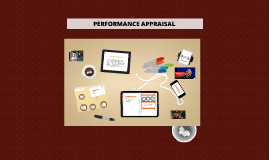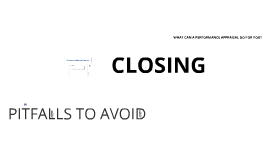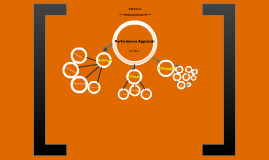Performance Appraisal Presentation
Transcript: Performance Appraisal Presentation Email Marketing Performance AI Tool Research & Implementation Total Email Campaigns Executed A total of 15 email campaigns were executed throughout the review period. These campaigns targeted different audience segments and focused on product launches, promotions, and newsletters, ensuring consistent engagement with our client base. Campaign Results Tracked AI Tools Researched Each campaign's performance metrics were tracked meticulously. Key metrics included an average open rate of 25%, click-through rate (CTR) of 5%, and a conversion rate of 3%, providing valuable insights into customer interactions. A comprehensive evaluation of multiple AI tools was conducted, focusing on functionality, user interface, and compatibility with existing systems. Tools such as Selenium, Test.ai, and Applitools were assessed for their capabilities to automate testing processes effectively. Successful Implementations Optimization Strategies Derived After analyzing campaign results, several optimization strategies were implemented. Adjustments included refining subject lines, segmenting audiences for personalization, and testing send times, which collectively improved engagement rates by 10%. Three AI tools have been successfully integrated into the testing workflow, including Selenium for automated web testing, resulting in a 30% time reduction for test cycles. Additionally, Applitools has improved visual testing accuracy considerably. Recommendations for Implementation Based on the research, it is recommended to implement tools that align with project needs and enhance testing speed. For example, Test.ai is advised for its intuitive interface and strong defect detection capabilities, which can streamline testing procedures. Tangible Outcomes from Tools The integration of AI tools has led to measurable improvements in testing efficiency. Key outcomes include a 25% increase in defect detection rates and a significant reduction in manual testing hours, promoting greater focus on critical tasks. Showcasing Achievements and Future Goals Website Manual Testing Total Number of Websites Tested A total of 25 websites were manually tested throughout the review period, ensuring thorough assessment and quality control across diverse platforms and functionalities. Test Reports Delivered Within 72 Hours Time Allocation & Self-Improvement Timely delivery of 85% of test reports within 72 hours of test completion, facilitating prompt action on feedback and defects. Critical Defects Resolved Before Release Achieved a 95% resolution rate for critical defects before release, significantly enhancing product reliability and user experience post-launch. Critical Defects Found Post-Release Only 2 instances of critical defects were found post-release, with preventive actions implemented to minimize future occurrences, demonstrating a strong pre-release testing process. Average Projects Tested Per Month On average, 3 projects were tested each month, maintaining a steady workflow and enabling timely feedback for developers and stakeholders. Time Allocation Breakdown Automation & AI-Based Testing Time allocation for various responsibilities reveals how efforts are distributed. 45% of the time is spent on manual testing, 30% on email marketing, and 25% on AI tool research. This balance ensures all critical areas are addressed efficiently. Test Cases Executed with Automation Automation Tools Utilized During the review period, over 300 test cases were executed using automation frameworks. This shift not only increased testing coverage but also improved turnaround time for test results. Various automation tools were employed, including Selenium for web applications, TestComplete for desktop applications, and JUnit for unit testing. These tools streamlined our testing processes, reducing manual intervention and enhancing reliability. Tools for Multitasking Certifications and Workshops Defect Detection Improvements Impact on Testing Efficiency The integration of AI in testing has enhanced defect detection rates by 30%, significantly reducing critical defects in production. This proactive approach helps in early identification of issues, enhancing product quality. Automation has led to a 40% increase in testing efficiency, allowing for more frequent releases and quicker feedback loops. This efficiency has positively influenced overall project timelines and stakeholder satisfaction. During the review period, several certifications and workshops were completed, including Agile Testing and AI in Testing. These learning experiences have significantly enhanced skills applicable to daily responsibilities and improved overall project outcomes. Effective multitasking requires the right tools. The use of project management software, collaboration platforms, and automated reporting systems increases productivity and ensures all tasks are completed on time without sacrificing quality. Proposed Goals & Innovations Five key goals for the

















